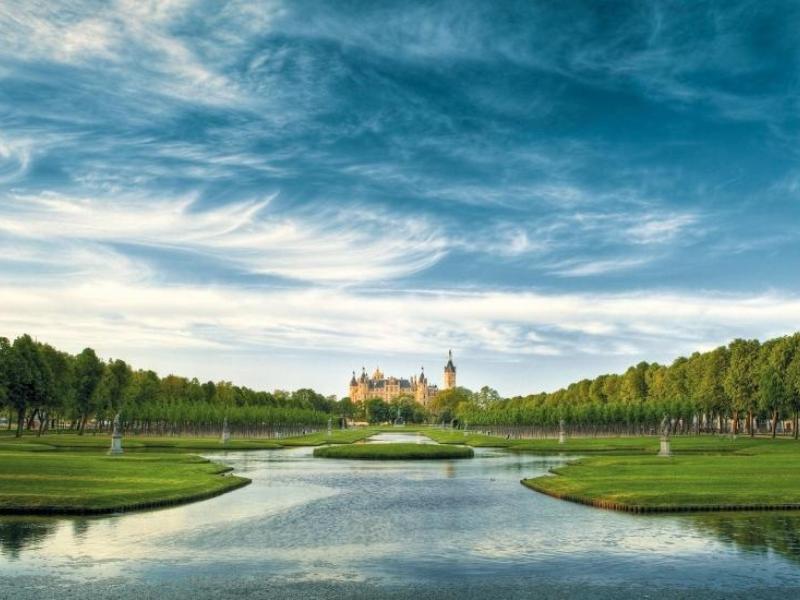By Nick Cooksey
Last month I discovered that Germany is a wonderful place for visitors from the Middle East to relax, breathe fresh air, and connect with nature, history, and culture.
With Germany being a choice of travel destination for travelers in this region, the growth of medical tourism is increasingly playing a significant role in attracting Middle Eastern travelers. While many tourists think of Berlin or Munich as cities to visit, the country is also home to many smaller towns that are packed with attractions worth visiting. With so many charming little towns, all filled with history and culture, Germany has much to explore.
On Bahrain Confidential’s visit to Mecklenburg-Vorpommern (yes, it’s very hard if you don’t know how to pronounce it) in September, we got to check out three such towns.
The first stop was Schwerin, “the city of seven lakes”. Shy of 100,000 residents, Schwerin is an old, scenic town with a fascinating history and served by many restaurants catering to different tastes. The beautiful lakes can be explored simply by walking along them or thanks to regular and inexpensive ferry trips.

I stayed at the lakeside Hotel Speicher am Ziegelsee, which is a renovated granary, (a storehouse for grains) dating back to 1939. The landmark can be easily spotted from across the lake. Converted into a ‘climate neutral’ hotel in 1998, it offers friendly hospitality and comfortable rooms with scenic views.
The lake by the hotel is open to swimmers, with a diving platform and sun lounges. As far as I know, I was the only guest at the time to swim in the lake. It was cold but refreshing and I found my daily morning swim before breakfast made me feel energized the whole day.
I explored Schwerin with Jürgen Hingst, an official city guide. Among all the guides I met during my travels, I spent the most time with Jürgen and learned much about the interesting history of the town from him. His love for this city and ability to express what made it unique definitely made a mark on me.
Substantial efforts have been made to preserve and restore important monuments that boast neo-renaissance architecture and painting. The most spectacular piece of heritage in Schwerin is the Castle. The site, which is on its own island so historically more easily defendable, has been home to the various rulers of the city for many hundreds of years. Today, the castle is open to the public, and in addition to being a fascinating monument of the past, a section that was destroyed by fire years ago has been rebuilt to house the state parliament.


After spending two days in Schwerin, it was time to move to the next city. I took the one-hour train ride to the Hanseatic City of Rostock on the north coast of Germany along the Baltic Sea. What’s really impressive about Germany is its extremely efficient and dependable intercity transportation systems. The cities are well-connected through the railways and trains are always on time – at least that’s what I found to be the case. An added benefit, if you decide to take the train, which is a sustainable way to travel, is the scenic views you get to enjoy en route.


In Rostock, I stayed at the Radisson Blue Hotel where from my spacious room I had a great view of the port and estuary. Rostock attractions include the Sea Promenade, a 100-year-old waterfront built by the Baltic Sea. You can spend your time by the water, go shopping, or visit some of Rostock’s landmarks like the Cultural History Museum and St. Peter’s Church (I visited both). I also visited the oldest University in Rostock, built-in 1419 with Renaissance-style decoration.
The next day I took the 15-minute train ride from Rostock to the charming little seaside town of Warnemünde, a resort that’s famous for its long and beautiful beaches of soft yellow sand and fresh sea air. Of course, there are also lots of shops and restaurants catering to all budgets.

The Teepott is a popular sight in the resort town, mostly owing to its unusual architecture. There are a number of old houses and attractions worth looking at, not least Edvard Munch’s House (the impressionist who created the famous painting, The Scream, who lived in this seaside town for 18 months between 1907 and 1908) which can be visited and which hosts events and exhibits.


Whether you’re in Germany to access its healthcare or just looking to explore somewhere different and enjoy a very pleasant change in the weather, there’s plenty for you to see.
If you are planning a visit or wish to know more about the region, get all the information on the Mecklenburg-Vorpommern Tourist Board.I was invited by the German National Tourist Office to be a part of this Press trip. It was themed around the GNTB campaign “German.Local.Culture“ #FindYourCityBreak (themes: Craft, Taste, Flair, Green) and the focus on sustainable travel and sustainable tourism offerings.
https://www.germany.travel/de/kampagne/german-local-culture/home.html
https://www.germany.travel/de/feel-good/nachhaltigkeit.html






